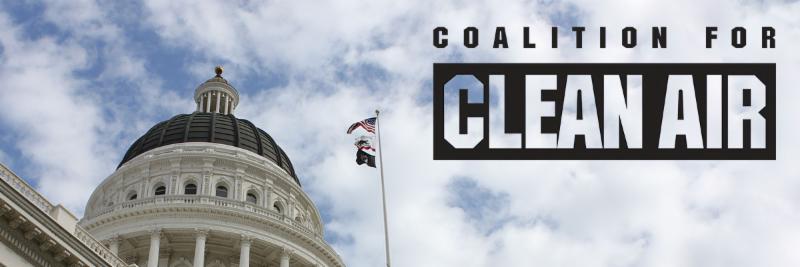By Bill Magavern
2017 saw major developments in California air quality policy, including a new community air protection law (AB 617, authored by Assemblymember Cristina Garcia), and the allocation of over $1 billion in incentive funds for cleaner vehicles and equipment.
What can we expect in 2018? Here are four of the key questions advocates are asking.
WILL REGULATORS CLAMP DOWN ON FREIGHT FACILITY EMISSIONS?
The California Air Resources Board is due in March to decide whether and how it will address the biggest sources of air pollution in Southern California – the seaports, railyards, airports and warehouses that act as magnets for diesel-spewing engines. The South Coast Air Quality Management District is also facing decisions on regulating emissions from these facilities. Communities suffering from freight pollution are asking the agencies to limit the diesel exhaust emitted in their vicinities.

HOW FAR WILL TRUMP GO IN ROLLING BACK CLEAN-CAR STANDARDS?
The Trump/Pruitt EPA has begun a process intended to weaken the national clean-car standards established by the Obama Administration, in collaboration with California and the automakers. Such a rollback would mean increased emissions, consumers paying more for fuel, and slowing the advance of technological innovation. It could also set the federal government on a course to attack California’s authority to set our own vehicle standards, since automakers would still need to comply with CARB’s rules.
WILL THE LEGISLATURE MAKE TRUCKS GO THROUGH SMOG CHECK?
Most people probably assume that big trucks have to go through an inspection and maintenance system overseen by the state. After all, if passenger cars require Smog Check, then shouldn’t diesel-belching big rigs? But in fact those heavy-duty vehicles are subject only to an outdated test for visible smoke. Now Senator Connie Leyva has authored a bill, SB 210, that would authorize CARB to develop and implement a heavy-duty vehicle inspection and maintenance program for non-gasoline heavy-duty on-road motor vehicles. Passing that bill, which is supported by the Governor, would help people living near major truck routes to breathe easier.
WILL TESLA AND OTHERS CONTINUE TO PUSH CLEAN-VEHICLE TECHNOLOGIES TO MARKET?
Both GM and Tesla are now producing affordable battery-electric cars with ranges of well over 200 miles; but the roughly 500,000 people on Tesla’s waiting list are wondering when Model 3 production will ramp up enough to meet demand. Meanwhile, several different manufacturers are selling zero-emission buses to transit agencies across the country, including LA Metro and many others in California. Progress in zero-emission trucks has been slower, but many manufacturers are working on battery or fuel-cell powered semis. And Cummins Westport has a 2018 near-zero-emission low-NOx 12-liter truck engine, which can be fuelled by low-carbon renewable methane to yield huge emission reductions compared to diesel engines.
YOU MAKE THIS WORK POSSIBLE
The mission of the Coalition for Clean Air is to protect public health, improve air quality and prevent climate change. Thank you to all the advocates, donors and volunteers who are helping us fight back against attempts to weaken California’s clean air laws.
We look forward to working with all of you again in 2018 and thank you for your support.
